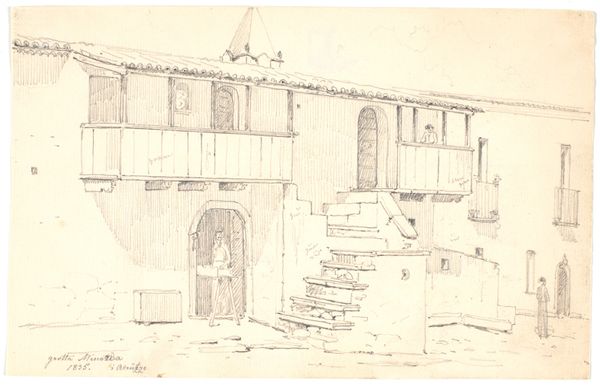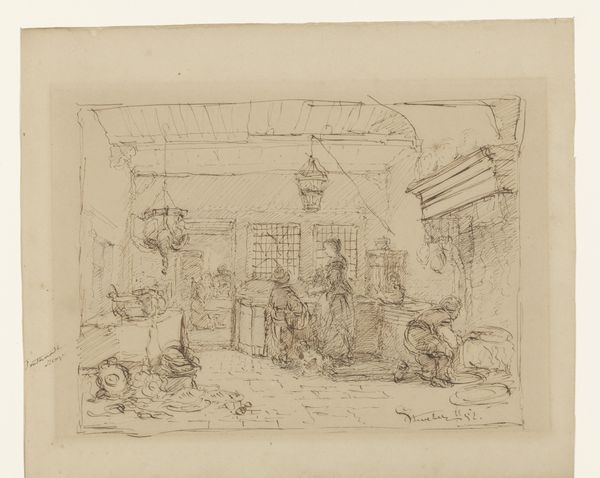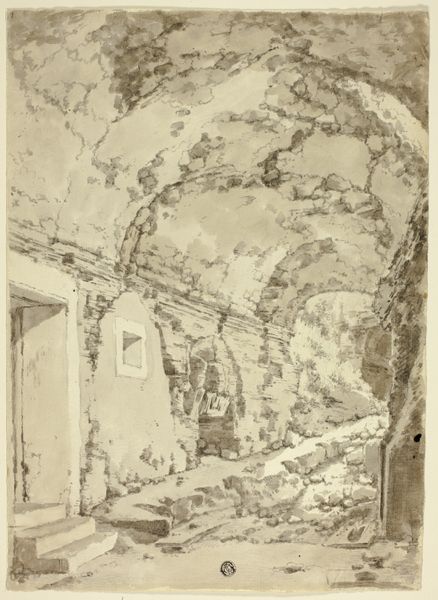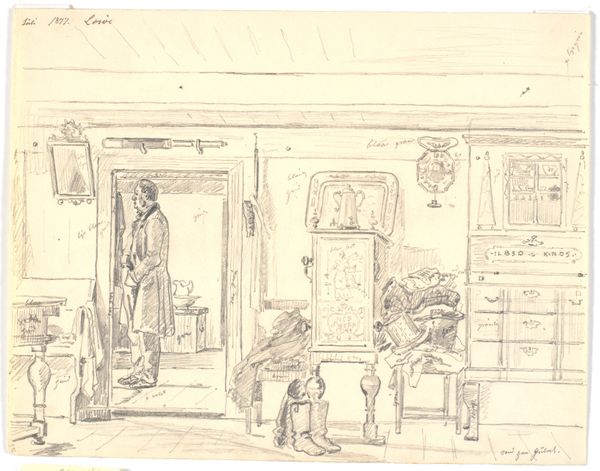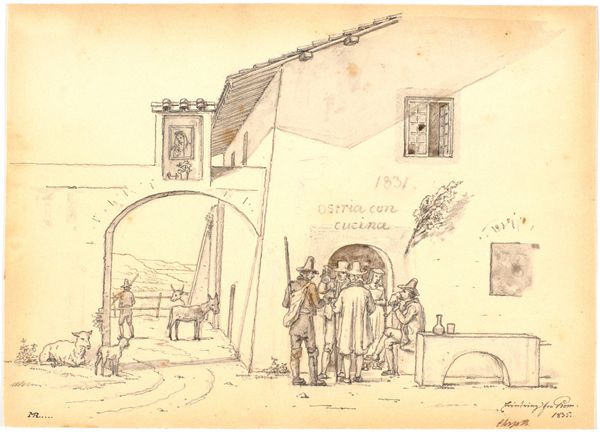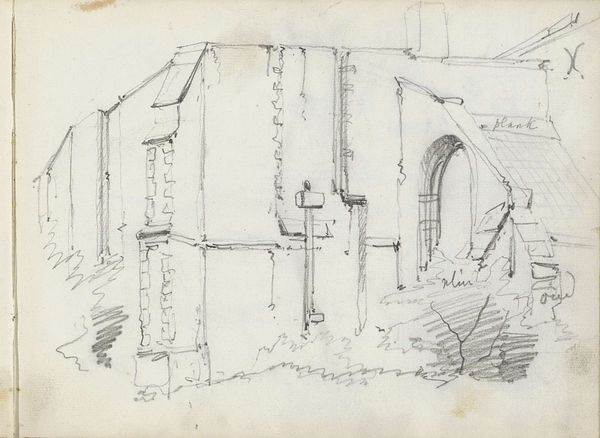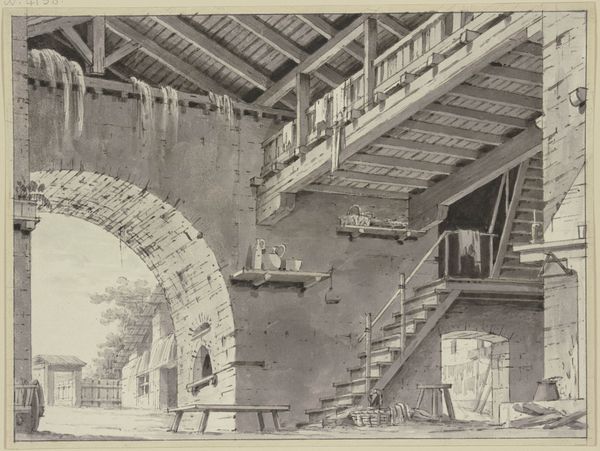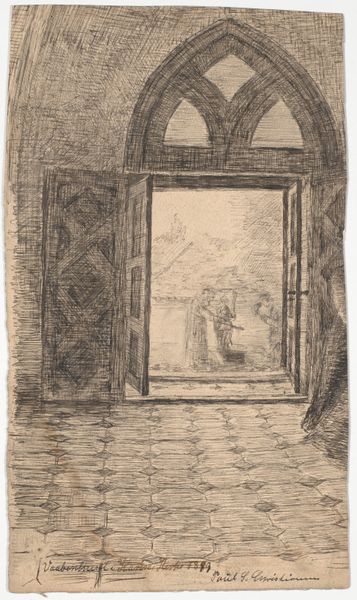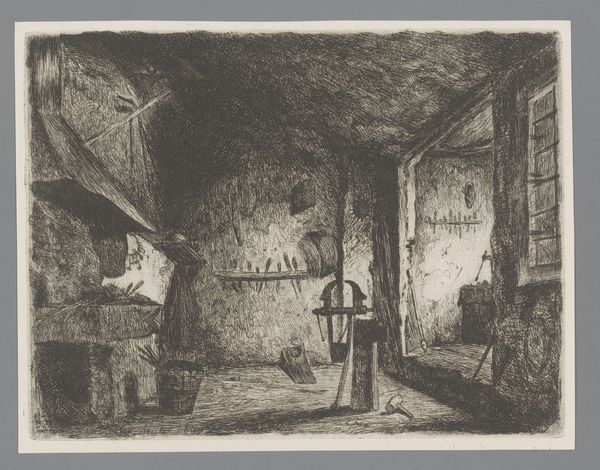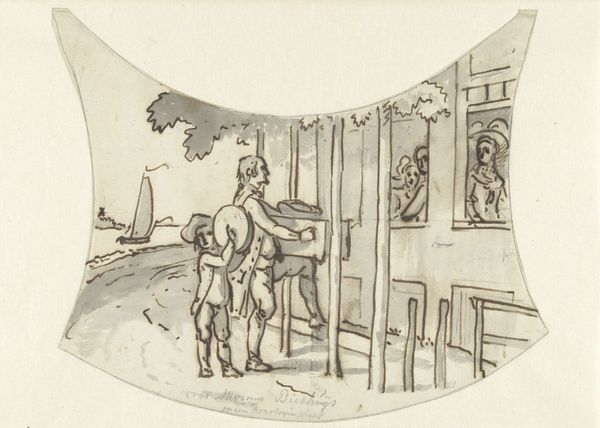
drawing, ink, pencil
#
drawing
#
etching
#
ink
#
romanticism
#
pencil
#
cityscape
Dimensions: 143 mm (height) x 222 mm (width) (bladmaal)
Curator: This pencil and ink drawing, "Gadescene i Bari," was created by Martinus Rørbye in 1835. It currently resides here at the SMK, the Statens Museum for Kunst. Editor: Immediately, I'm struck by the drawing's hushed, almost dreamlike quality. The light is diffuse, softening the harsh angles of the architecture. It's an intimate street scene, despite the apparent public setting. Curator: The subdued tonality undoubtedly speaks to its Romanticism, an aesthetic prevalent during Rørbye's era. The drawing style itself – those deliberate, almost scientific strokes – reflects a keenness to record architectural detail with precision. Notice how he employs line work to render volume and recession, which adds considerable depth. Editor: Precisely. But I’m also thinking about Rørbye as a Danish artist traveling in Italy. The people he depicts seem so still, almost ethnographic. One must consider his perspective as an outsider looking in and choosing to record specific elements of the city’s social fabric. Who were these people, and what might this image have meant to a Danish audience in the 1830s? Were these Italian scenes simply exotic curiosities, or were they meant to convey something deeper about the human condition? Curator: Certainly, that interpretative lens adds valuable complexity. The people here certainly become another architectural detail, a visual note to complete the whole, while he is fascinated with this composition based on the arched structure. His attention clearly went to rendering form accurately. It showcases how artists then were thinking of rational approaches to space and perspective. Editor: I think that your structural interpretation is solid, but it might have served some purpose to reinforce and legitimize a dominant, even colonial gaze. It brings questions around artistic intentionality that complicate any interpretation. But maybe both possibilities can enrich the encounter. Curator: I find, perhaps, a more serene contemplation of form. The arches, the staircase—a play with line that has its own distinct appeal. Editor: And perhaps it’s that dialogue between the personal and the political, between form and context that makes this artwork endlessly compelling. Curator: It leaves me with a lingering appreciation for Rørbye’s draughtsmanship. His use of pencil and ink in this cityscape encapsulates something timeless about our relationship with architecture and the built environment.
Comments
No comments
Be the first to comment and join the conversation on the ultimate creative platform.
